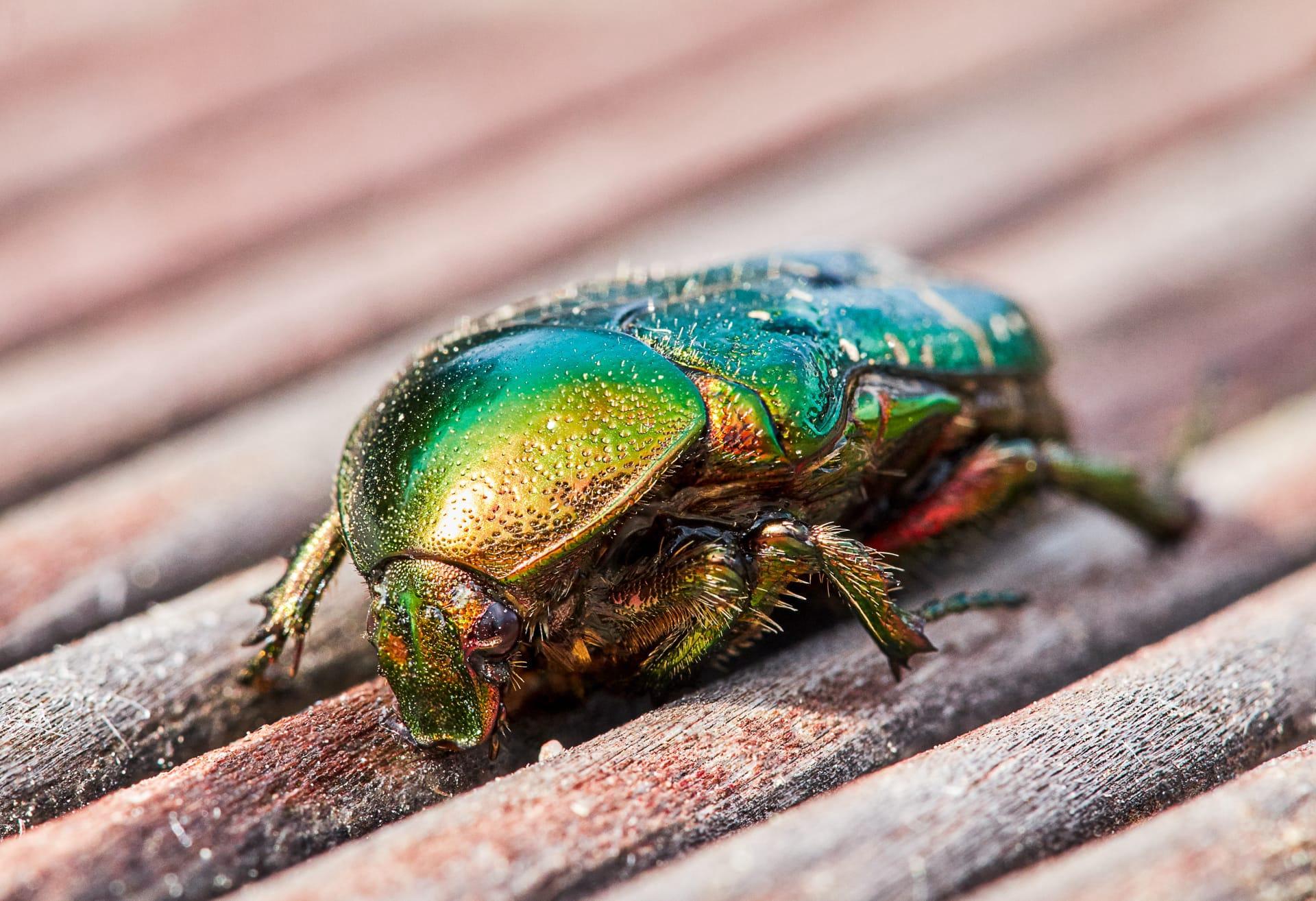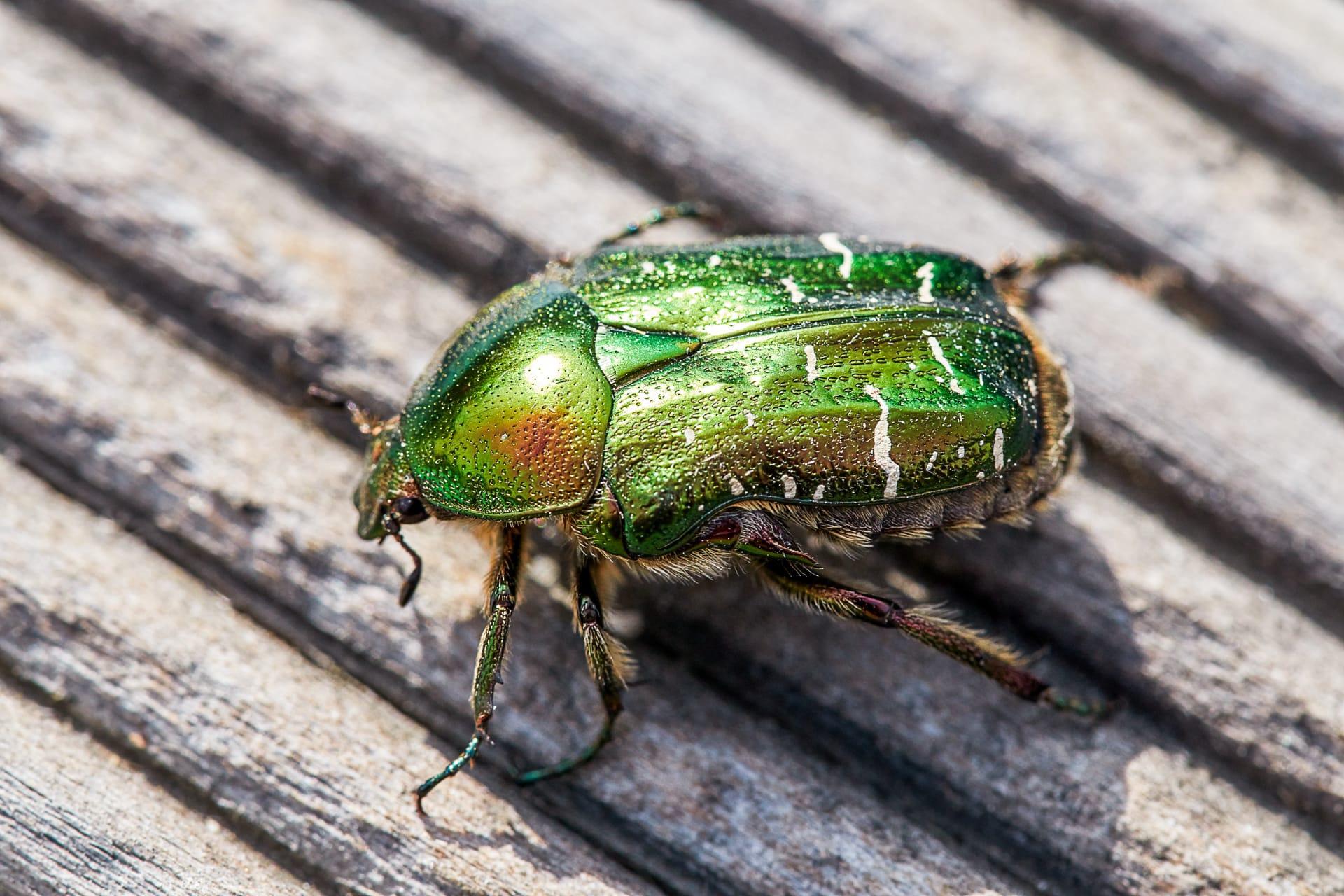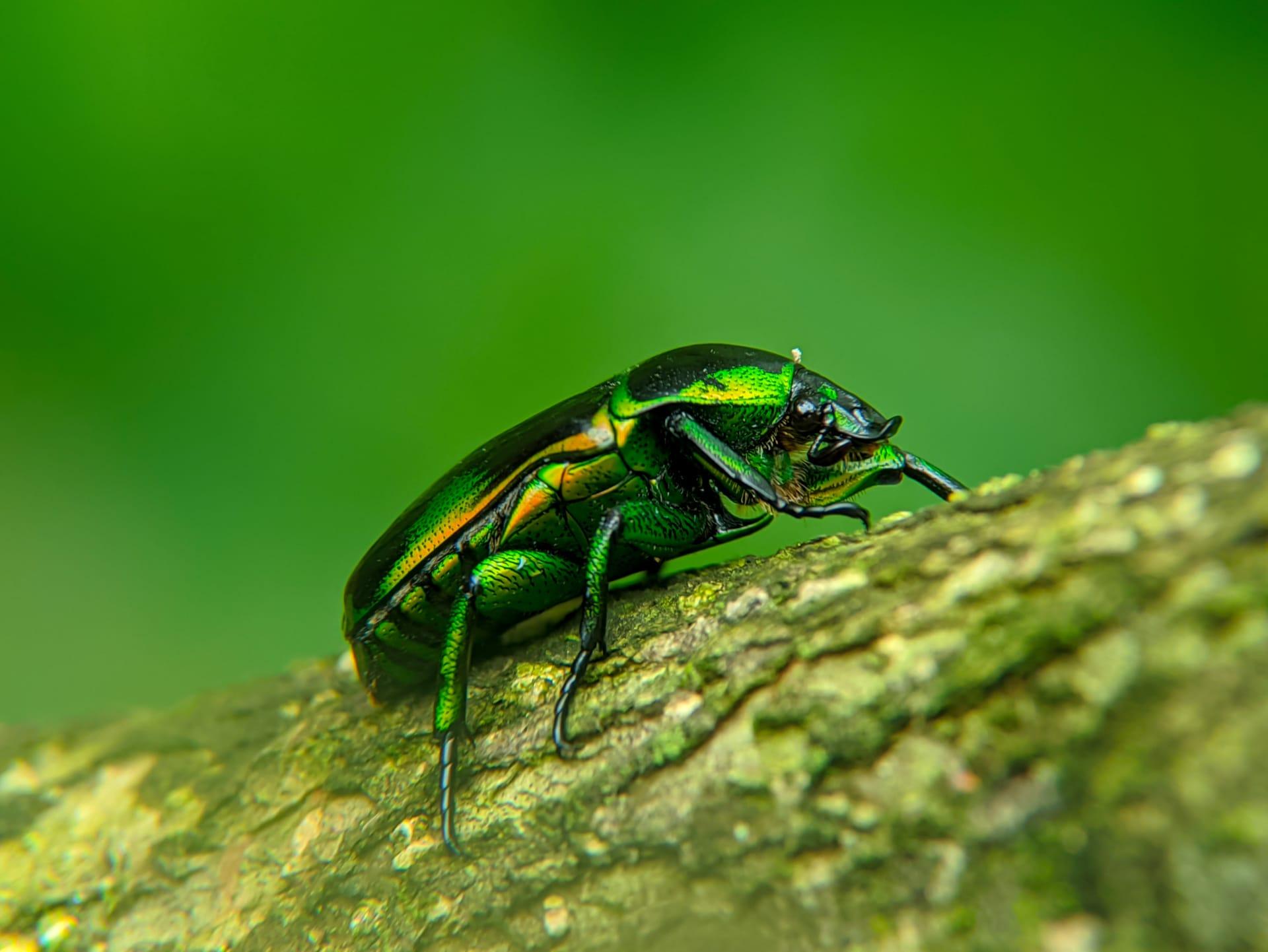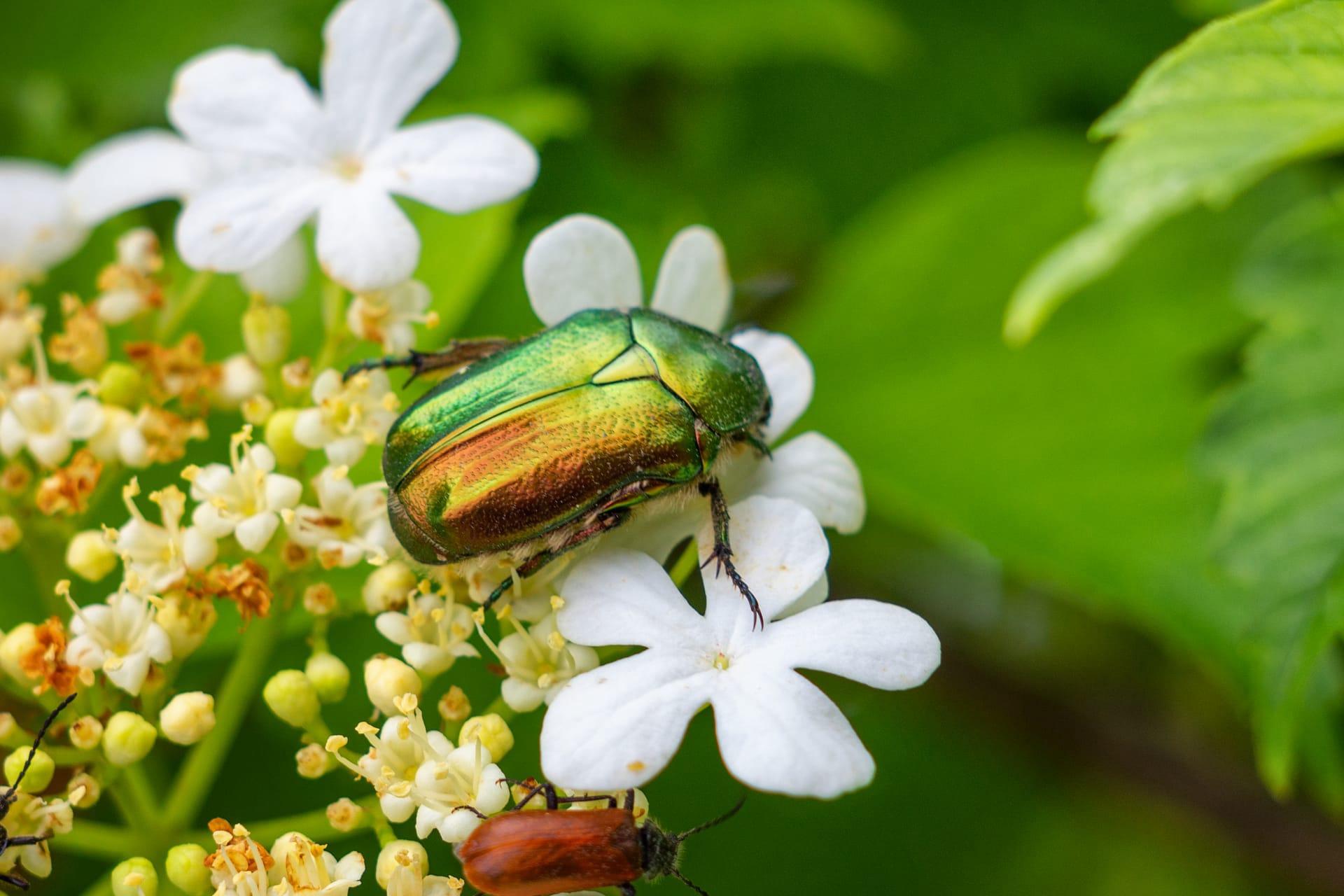1
The Green June Beetle (Cotinis nitida), found primarily in the eastern United States, is known for its striking metallic green color. Measuring about 0.8 to 1 inch (2 to 2.5 cm) in length, these beetles not only captivate with their shimmering hues but also with their unique flight pattern. Unlike many beetles that keep their wings beneath a protective cover, the Green June Beetle’s wings remain exposed during flight, creating a buzzing sound reminiscent of bumblebees. This sound can be especially loud when they fly in groups, adding a symphonic element to a warm summer day.
Another fascinating aspect of the Green June Beetle is its larval stage, which lasts approximately one year. The larvae, commonly known as grubs, are C-shaped and can grow up to 2 inches (5 cm) long. They primarily feed on decaying organic matter in the soil, playing a crucial role in the ecosystem by aiding in decomposition. However, they can also be a nuisance in lawns and gardens, as their feeding can damage plant roots. During their development, these grubs undergo several molts, shedding their exoskeleton multiple times before pupating and eventually emerging as adult beetles.

2
The Green June Beetle is a daytime forager, quite unlike many of its nocturnal cousins. During the day, these beetles are often seen busily moving from flower to flower, feeding on ripe fruits and nectar. Their diet includes a variety of fruits such as apples, peaches, grapes, and berries, making them frequent visitors of orchards and gardens. This feeding habit, while beneficial for pollination, can sometimes lead to the beetles being considered pests due to the damage they inflict on fruit crops.
An intriguing behavior of the Green June Beetle is its method of burial for laying eggs. The female beetle digs a tunnel in the ground, often up to 6 inches (15 cm) deep, to lay her eggs. This tunneling activity is crucial as it provides a safe and moist environment for the eggs and subsequent larvae. Each female can lay a cluster of about 10 to 30 eggs, which hatch within approximately 18 days. The careful selection of the site and the depth of the tunnel play a vital role in the survival of the eggs, protecting them from predators and extreme temperatures.

3
Green June Beetles have a unique defense mechanism that is quite rare among beetles. When threatened, they can secrete a foul-smelling substance from a gland located near the end of their abdomen. This substance acts as a deterrent to predators, helping the beetle escape from potential harm. This defense tactic highlights the beetle's ability to adapt and survive in various environmental conditions.
These beetles are also known for their distinct mating ritual. During the mating season, which usually peaks in late summer, males engage in aerial displays to attract females. They fly around in an erratic pattern, often close to the ground, to catch the attention of potential mates. Once a female is interested, the pair will mate on the ground. This aerial courtship is not just a display of endurance but also a demonstration of the male's health and vitality, key factors in the female's choice of a mate.

4
Green June Beetles are surprisingly good climbers. Despite their bulky build, they can often be seen scaling trees and shrubs to reach ripe fruits. Their strong legs and claw-like structures at the end of their legs aid in this climbing ability, allowing them to navigate vertical surfaces with relative ease. This skill is essential for their survival, as it helps them access food sources that are not available on the ground.
Another interesting fact about the Green June Beetle is its role in soil aeration. As the larvae move and feed within the soil, they inadvertently aerate it, improving soil health. This aeration is beneficial for plant growth as it enhances water penetration and nutrient absorption. Therefore, despite the potential damage to plant roots, the larvae's presence in the soil can have a positive impact on the overall health of an ecosystem.

5
The life cycle of the Green June Beetle is a fascinating process that spans approximately one year. From egg to larva, pupa, and then adult, each stage has its unique characteristics and challenges. The transformation from a pupa to an adult beetle is particularly remarkable. As the pupa develops inside a hardened shell, it undergoes a complete metamorphosis, emerging as a fully formed adult beetle ready to take on the world.
The Green June Beetle's interaction with humans is notable. While they are generally harmless to humans, their attraction to ripe fruits and habit of swarming in large numbers can make them a nuisance. However, they are also appreciated by many for their role in pollination and the beauty they add to the natural landscape. Their presence in gardens and orchards, while sometimes problematic, is a reminder of the diverse and intricate web of life in which we all play a part.